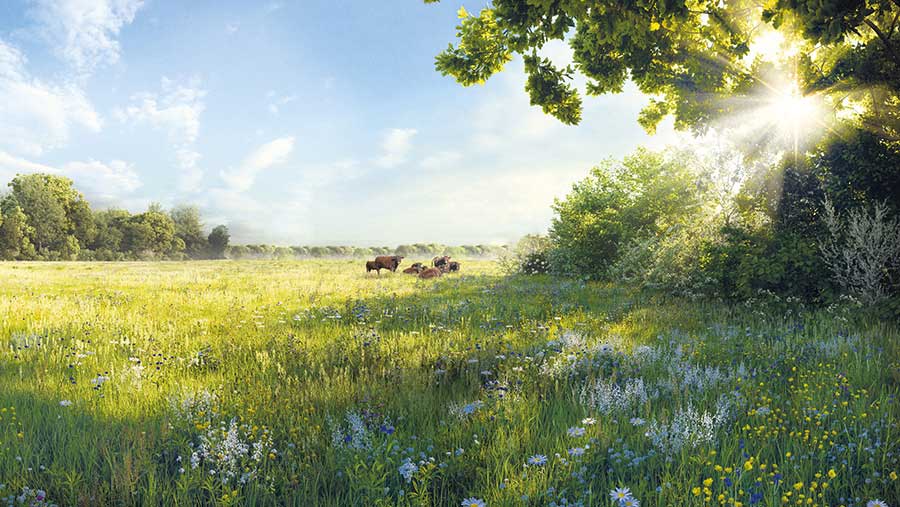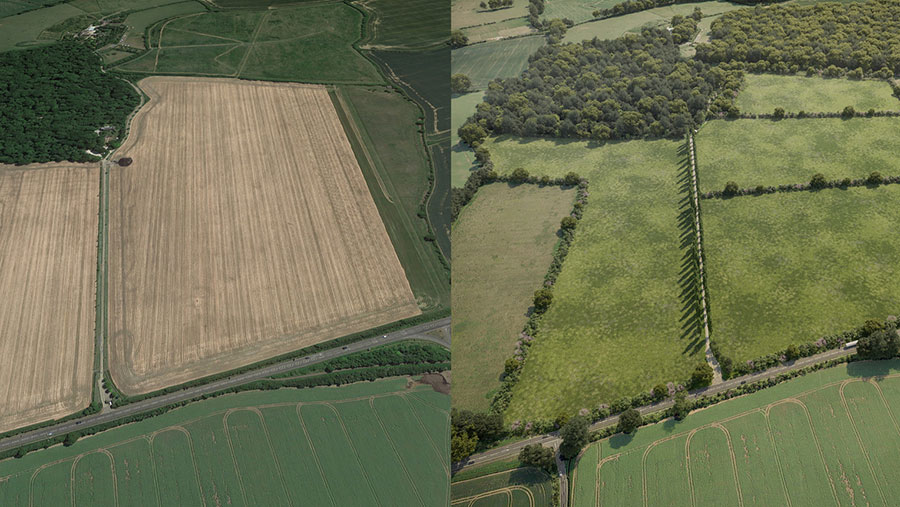Advertiser content
Farmers signing up to new BNG scheme secure long-term income
Provided by
Environment Bank is leasing parcels of land to co-create biologically diverse habitats that will play a key role in addressing the critical issue of biodiversity loss whilst providing long-term income to landowners.
Biodiversity Net Gain (BNG) has created a new income stream for farmers, using their natural capital to benefit nature whilst building resilience in their landholdings. One farmer who is benefitting is Toby Diggens.
Toby is working with BNG experts Environment Bank to set up a Habitat Bank on his farm in Devon, creating BNG Units that are then sold to developers enabling them to meet their biodiversity requirements.
As the years roll around, we grow ever closer to the end of EU subsidies and with rising input costs, many farmers are looking more closely than ever at how new agri-environmental schemes can help plug the funding gap.
Many farmers are taking matters into their own hands, looking at how they can use their natural capital for new diversification projects like BNG, solar or carbon capture, and investigating how they fit with existing farm enterprises.
Toby is one such farmer, who saw the opportunity in 2021 to harness his land for nature restoration. He has now signed a 30 year lease with Environment Bank for 10 hectares of land on his Tiverton farm, which he will manage over the period, securing annual payments over 30 years.
Toby also benefitted from a welcome bonus. With Environment Bank, funding all overheads for the establishment of the Habitat Bank.
Environment Bank, which runs the privately owned scheme, take all the legal liability for the project, as well as monitoring and reporting, and supporting with the complex implementation.
The recovery programme on the land will be fully established over the next 10-12 years leading to the creation of a more functional and resilient natural landscape capable of supporting richer and more abundant biodiversity.
Find out more about the Habitat Bank creation project with Toby.
Environment Bank is very clear on how they approach BNG and importantly, how farmers and landowners can benefit. Its core business is BNG and the team of ecologists is setting up Habitat Banks in every local authority area across England right now.

25-hectare lowland meadow and mixed scrub Habitat Bank provides rich grazing for cattle. © Environment Bank
Tom Brown is Head of Land for the North at Environment Bank. He said, “Habitat Banks can easily integrate alongside other farm enterprises.
They don’t take land used to grow food out of production and farmers can still produce arable crops whilst taking part in a Habitat Bank creation project. Equally, Habitat Banks can be grazed or cropped for hay, or sit alongside a tourism enterprise.
“Environment Bank is already fully funded, meaning that it can typically arrange, lease, and manage payments within 20 weeks of registration, and cover all costs for establishing and managing the Habitat Bank, extending to legal and tax advice where appropriate.
It has a ready-made solution, so unlike with a brokerage model, farmers don’t have to manage the complex implementation process or take any of the risk of the scheme failing – that all sits with us.”
Habitat Banking was a concept pioneered by prominent ecologist Professor David Hill CBE, one of the founding members of Natural England.
In the next 5 years, the project, which spans across England, hopes to provide 200 habitats for rare and scarce plant species, wintering and breeding birds, amphibians, reptiles, and many species of invertebrates, including butterflies.
Typically, Environment Bank looks to contract the management of the Habitat Bank back to the farmer or landowner, which makes up part of the payments, and this is fully supported by its team of ecologists throughout the full 30 year term of the agreement.
It considers all types of land, including currently unproductive areas, old pasture and scrubland as well as under-performing arable land.
This is across the acreage and doesn’t have to be in one block. Primarily, it is looking for parcels of land between 10-100 hectares in size – it doesn’t want to take over whole farms.
This is done on a bespoke basis, there is no ‘one size fits all’.
They work with farmers to establish habitats that work for them and their land operations, and which fundamentally create the best outcomes for nature locally.
Payments are guaranteed over a 30 year period, increasing with inflation, up to £27,000 per hectare and could be more depending on the type of habitat creation.
Income will be broken down between a lease payment for the land and a habitat management payment.
Payments will be made annually with the first year upfront. Unlike other schemes, payments will start immediately on signing and a bonus will be paid to welcome farmers and landowners to Environment Bank.
To find out what your habitat and income options are, speak with the Environment Bank team on 01904 202 990 or register your land at environmentbank.com.

